
28-12-2025 12:08
Margot en Geert VullingsThis possible Karstenia was found on the bark of d

21-12-2025 21:32
Pol DebaenstHello, Garden, Burgweg 19, Veurne, BelgiumOn 10/1

26-12-2025 21:19
Arnold BüschlenPithyella chalaudii Priou. Ist als Bryoparasit in

21-12-2025 09:32
Hello.A tiny ascomycete found embedded in wood in

18-12-2025 21:17
Pol DebaenstThe identification took me to Byssonectria deformi

24-12-2025 17:08
Hulda Caroline HolteHello, I have found this propoloid ascomycete on
 Hello, dear friends.
Hello, dear friends.I'd like to ask about, I guess, some Trichophaeopsis sp. It was found on a wet bark of Acacia tree, on it's inner side.
The fruiting bodies are very small, reach only about 1-1,5 mm in diameter.
The hairs are sharp, the longer ones reach about 0,4 mm. The shorter ones are bit widened on their base and reach 25 mkm width.
The spores are broadly ellipsoid and quite large - 22-25*12,5-16 mkm.
Thank you.
Olga

Hairs seems to have deep insertion and one of two types have bulbous bases. So, I think it is a Paratrichophaea species, not Trichophaeopsis.
Probably P. boudieri but your spores measurements are different. Have you measured in water, on matures spores from sporogram or in asci ?
You can consult the excellent work by Nicolas Van Vooren in FMBDS 176 (2005).
If Nico see this message, he can send you this article by mail.
If René see this message, he can put his drawings on it.
If they choose to make a pause for "new year", I can send you all by private mail tomorrow.
Beñat

I checked my mailbox and don't see yet any new messages.
Maybe you are right and today is a very busy day for all, who makes preparations for New Year! Wish you a good and happy year too! :)
Olga
Chère Collègue,
Normalement, les ascospores de P. boudieri ne dépassent pas 13 µm de large !
Je vous remets, à toute fin utile, ma planche de dessins de P. boudieri, en vous disant que la base des poils peut avoir un arrondi plus allongé. Je vous remets aussi, une clé du genre Trichophaea et genres voisins.
En ce dernier jour de l’année je vous souhaite, ainsi qu’à tous les amis mycologues et à leurs proches, mes vœux de bonheur et de santé pour 2014, sans oublier, bien sûr, de belles découvertes mycologiques.
René

I wish you a Happy New Year and new and interesting discoveries in a World of Fungi. :)
Olga
You have found an interesting collection of a species most likely belonging to the genus Paratrichophaea as suggested also by Beñat as well.
P. michiganensis has 4-spored asci and P. pygmea much smaller spores (12 x 7 µm). The more common and cosmopolitan species P. boudieri could be a better candidate, but as already noted by René the broadness of the spores doesn't exceed a width of 13 µm. The range of the spore size for this species is (17)18-22(23) x (9)10-12(13) µm, see http://www.ascofrance.com/uploads/document/36-0001.pdf
Benkert (2010) divided this species into two spore groups on the basis of the length of the spores and also introduced a new species P. parvispora with spores up to 14-16(17) x 8-10 µm.
Your collection has larger spores than P. boudieri and I can only suggest to examine and describe this find thorough. It could be a new species (P. grandispora?) and would be worthwhile to publish. It has been more than 10 years ago since my paper appeared but I still have many photocopies of the publications I consulted. Let me know if I can help.
Kind regards,
Ron Bronckers

These fruiting bodies were found by my good friend and amateur mushroom picker Alex Gibchin about half a year ago. I just examined them under my microscope at home.
As we didn't know, how to store them, we did not keep them. Can they be dried up somehow to be sent for the more serious check and study? I would ask Alex to try to find more of these and then we could send them to you, if you would like to study them.
Olga.
I have sent an e-mail to you to see if this works because the first time (02-01) it didn't.
Everything seems to be good this time so I will continue our conversation by e-mail if you don't mind. My e-mail address: ronbronckers@zonnet.nl
A reply is on its way soon.
All the best,
Ron
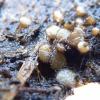
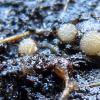
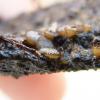
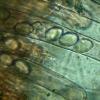
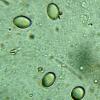
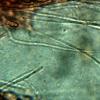
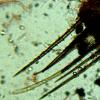
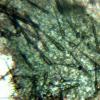
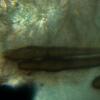
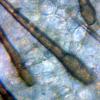
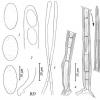
 Clé du genre Trichophaea et voisins, avec planches
Clé du genre Trichophaea et voisins, avec planches